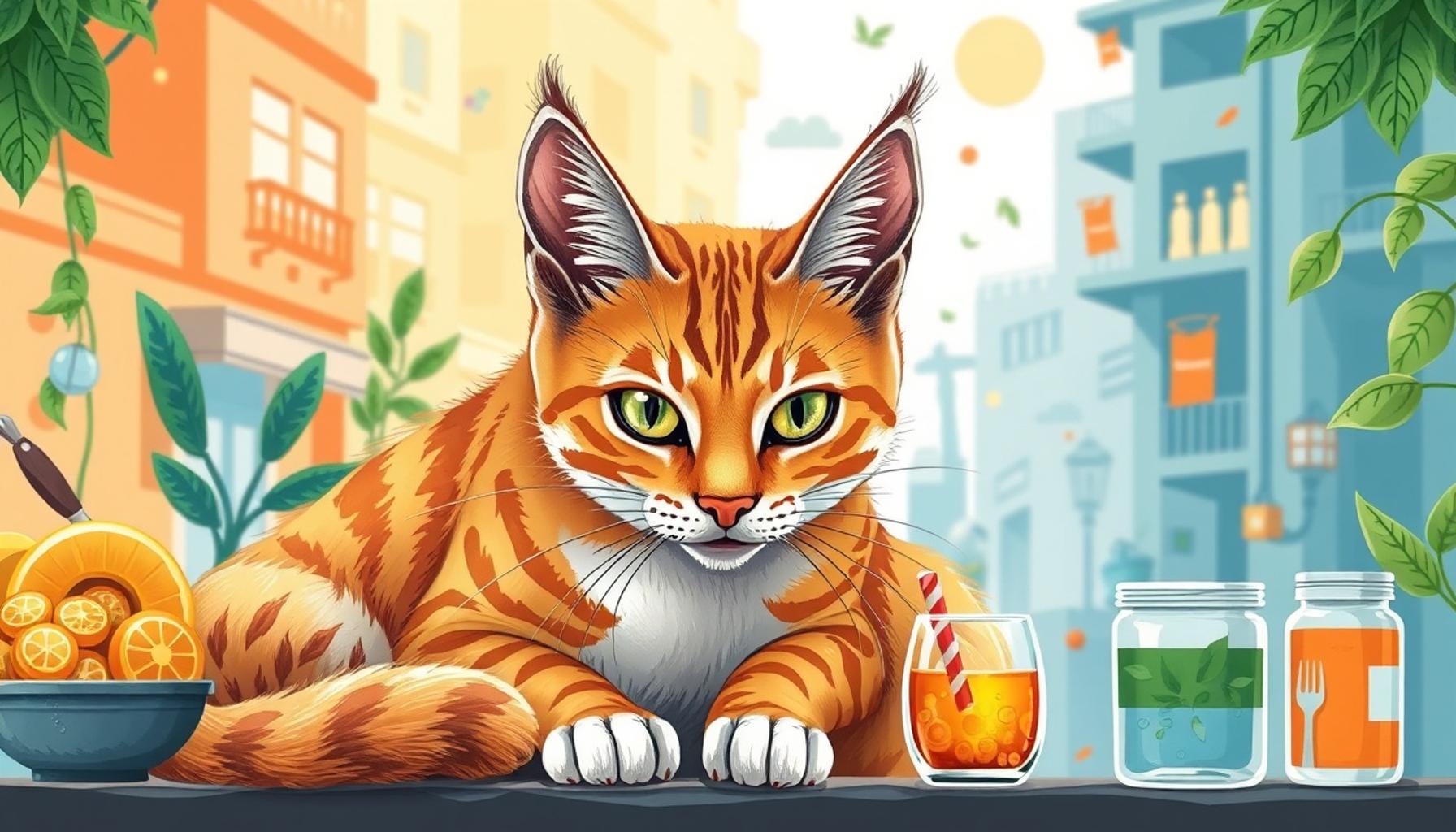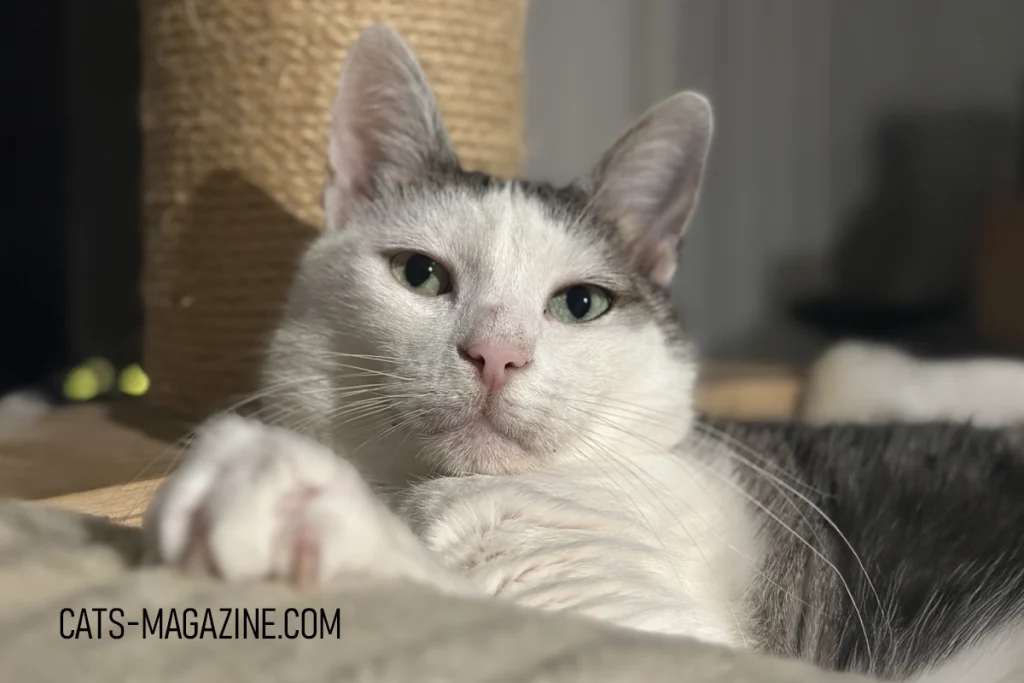Urban Cat Nutrition Natural Food vs Commercial Kibble Guide

In the bustling world of urban living, our feline companions often face a dilemma when it comes to their nutrition. Understanding the unique dietary needs of cats is essential, especially when choosing between natural foods and commercial kibble. This is not just a matter of preference, as the right nutrition can significantly impact a cat’s health and overall well-being.
As pet owners, we are tasked with making informed choices that contribute to our cats’ longevity and happiness. Urban environments present specific challenges, such as limited access to fresh, natural food sources, which can complicate feeding decisions. This article will delve into the **Top 5** considerations that every cat owner should keep in mind regarding nutrition, offering insights into the benefits and drawbacks of both natural foods and commercial options.
Join us as we explore the evolving landscape of feline nutrition, providing you with the knowledge needed to make the best possible choices for your furry friends. Whether you are a dedicated proponent of organic ingredients or a busy urbanite relying on commercial products, there is valuable information ahead.
ADDITIONAL INSIGHTS: Expand your understanding here
Top 5: Cat Nutrition: Natural Foods vs. Commercial Cat Food in Urban Environments
When it comes to the nutrition of our feline companions, the debate between feeding them natural foods and relying on commercial cat food is becoming increasingly pertinent, especially within urban environments. Urban dwellers, often engrossed in fast-paced lifestyles, face unique challenges and opportunities when choosing the best dietary options for their cats. With many cat owners striving to provide optimal care, understanding the intricacies of feline nutrition can be daunting. In this article, we explore the top five considerations around urban cat nutrition, ranking them from least to most important, providing insights that empower readers to make informed decisions.

5. Cost and Accessibility
In urban settings, cost and accessibility are paramount considerations. Commercial cat food is extremely accessible, available in supermarkets, specialized pet stores, and even online platforms. This abundance allows cat owners to select products that match both their financial constraints and their pet’s dietary requirements. The consumer is often presented with a range of options, from budget-friendly to premium brands, catering to different nutritional needs and preferences.
However, opting for a natural diet may require more effort. Owners often need to source fresh ingredients from local markets or organic supermarkets, which could not only be more time-consuming but also more expensive. As food enthusiasts know, the freshest and most nutrient-dense ingredients often come with a higher price tag. This trade-off between cost and health benefits is a common dilemma among pet owners. Furthermore, urban pet parents who lead busy lives might prefer the convenience of ready-to-eat commercial foods that save time and effort.
- Easy availability of commercial products in local stores
- Extensive variety catering to various cat health needs
- The potentially higher expense for fresh, natural ingredients
4. Nutritional Balance
The next key factor is ensuring the nutritional balance of a cat’s diet, vital for their overall health. Commercial cat foods are scientifically formulated to meet specific dietary needs, often adhering to standards set by organizations like the AAFCO (Association of American Feed Control Officials). These formulations ensure that cats receive a balanced mix of proteins, fats, vitamins, and minerals essential for their vitality and well-being.
Conversely, natural feeding demands meticulous planning to ensure all nutritional needs are met. Owners must often conduct thorough research or consult with veterinarians to design a complete diet plan. This might involve balancing proteins from meats, fats from oils or fish, and essential vitamins from vegetables or supplements — making it a complex task to achieve optimal nutrition.
- Commercial foods usually meet stringent nutritional standards
- Natural diets require considerable planning and knowledge
- Each feeding method has its pros and cons concerning nutritional adequacy
3. Ingredients and Quality Control
Ensuring quality ingredients and maintaining quality control is a crucial concern when choosing feline diets. Reputable commercial brands often utilize high-quality ingredients and maintain rigorous quality control procedures to ensure product safety and nutritional integrity. Transparency in ingredient sourcing and adherence to regulated manufacturing practices provide reassurance to consumers regarding the food’s safety.
Conversely, feeding natural meals offers the advantage of knowing precisely what ingredients are in a cat’s diet, with the potential inclusion of organic or locally sourced materials. However, the quality of these ingredients can vary significantly based on their source. This variance demands that pet owners either trust their sources implicitly or invest time in sourcing high-quality components themselves.
- Ingredient transparency is crucial for both feeding methods
- Established commercial brands often satisfy stringent quality controls
- Natural diets may incorporate premium, fresh ingredients but vary in consistency
2. Health Benefits and Risks
One of the more debated factors is the health benefits and risks associated with each dietary approach. Advocates of natural feeding champion the benefits of fresh ingredients which can purportedly lead to improved digestive health, shinier coats, and heightened energy levels. Nonetheless, potential risks of raw diets include exposure to bacterial contaminants and the challenge of covering the full spectrum of necessary nutrients.
Commercial foods, while convenient, are sometimes criticized for containing fillers or artificial additives that may pose health risks for sensitive cats or those with allergies. Consequently, monitoring health indicators such as weight, coat condition, and energy levels can offer essential insights when transitioning between or within dietary methods.
- Well-planned natural diets may enhance overall health and vitality
- Raw diets pose health risks if not correctly managed
- Commercial foods can be nutritious but sometimes include undesirable additives
1. Individual Cat Needs and Preferences
The most critical aspect to consider is the individual needs and preferences of each cat. Each feline possesses unique dietary requirements influenced by factors such as age, activity level, health status, and taste preferences. Some cats might thrive on natural diets, relishing variety and fresh ingredients, while others may exhibit a strong preference for the consistency of commercial foods.
Close observation of a cat’s reaction to different foods provides invaluable insights into what is best suited for them. Engaging in discussions with a professional veterinarian can further guide pet owners in selecting the most appropriate feeding strategies, optimizing their cat’s health and happiness.
Whether deciding between natural foods, commercial options, or a mix of both, the ultimate goal remains the same: to provide a nourishing diet that supports the individual well-being of every feline companion.
| Category | Description |
|---|---|
| Nutritional Value | Natural foods, such as raw meat, fish, and vegetables, generally provide higher nutritional value compared to commercial cat food. These foods are less processed and retain essential vitamins and minerals needed for feline health. |
| Ingredient Transparency | With homemade meals, there is complete ingredient transparency and no hidden additives or fillers, offering pet owners the ability to control every aspect of their cat’s diet. |
| Customization | Natural diets allow for customization based on individual health needs, preferences, and allergies of cats, tailoring their meals to better suit specific dietary requirements. |
| Environmental Impact | Choosing natural foods can lead to a lower environmental impact as it often involves sourcing local ingredients, reducing the carbon footprint linked to mass-produced commercial cat food. |
In urban environments, many pet owners are confronted with the dilemma of choosing between commercial cat food and natural feeding practices. The decision has implications not just for the health of the cats but also for the sustainability of the environment.One significant advantage of natural diets is the nutritional value provided. Commercial cat foods often contain processed ingredients that may lack essential nutrients. In contrast, a raw or holistic approach ensures that cats receive a diet rich in protein, vital for their muscular and organ health. Owners should consider how the inclusion of fresh, unprocessed foods can enhance the overall health of their cats, potentially reducing vet visits in the long run.Moreover, the ingredient transparency available with homemade diets fosters trust between pet owners and what they feed their cats. Unlike commercial brands that may use ambiguous terms like “meat meal” or “by-products,” owners can select precisely what goes into their pets’ meals, eliminating concerns about harmful substances or allergens.Customization of diet is another critical factor that promotes the choice of natural over commercial food. Each cat has unique dietary needs, and a one-size-fits-all approach rarely suffices in nutrition. Whether catering to a cat’s propensity for allergies or considering a transition from a less nutritious commercial food, owners can tailor meals using individual ingredients that account for the specific needs of their pets.As urban dwellers increasingly become aware of their ecological footprint, the environmental impact of feeding choices plays a significant role. Natural feeding practices often emphasize local sourcing of ingredients, which can reduce the energy consumed in transporting commercial food across vast distances. Moreover, supporting local farms and markets can contribute to community sustainability while ensuring the procurement of fresher ingredients.Understanding these dynamics can help guide pet owners towards making informed decisions that prioritize not only the health of their feline companions but also contribute positively to their environment. As urban landscapes evolve, the conversation around what constitutes optimal feline nutrition continues to expand, inviting further exploration and commitment from conscientious cat owners.
SEE ALSO: Click here to read another article
Frequently Asked Questions About Cat Nutrition: Natural Foods vs. Commercial Foods in Urban Environments
What are the primary differences between natural food and commercial cat food?
The primary differences lie in composition and processing. Natural foods typically consist of fresh, whole ingredients without additives or preservatives. They mimic what cats would eat in the wild, including raw meats and organic ingredients. Commercial cat foods, on the other hand, are processed products often fortified with vitamins and minerals to meet dietary guidelines. They can be available as dry kibble or wet canned options.
Is there a nutritional advantage to feeding cats natural foods over commercial cat foods?
Natural foods can offer benefits such as fewer preservatives and potentially higher moisture content, which might be more aligned with a cat’s ancestral diet. However, commercial foods are designed to provide a balanced diet, ensuring cats receive necessary nutrients like taurine, essential for their health. It is crucial to consider that natural diets require careful balancing to avoid deficiencies.
Are there particular challenges to feeding cats natural foods in urban environments?
Yes, there are several challenges including cost, dietary balance, and sourcing fresh ingredients. Urban pet owners might find it harder to access fresh, high-quality meats and other components needed for a balanced natural diet. Additionally, preparing natural food can be time-consuming, and improper diets can lead to nutritional deficiencies. This is where commercial foods can offer convenience and consistency.
How do cat owners transition their pets from commercial food to a natural diet?
Transitioning should be a gradual process to avoid digestive issues. Start by introducing small portions of natural foods while decreasing the amount of commercial food over a period of weeks. Monitoring your cat’s health during the transition period is important, and it is advisable to consult a veterinarian to ensure the new diet meets all nutritional requirements.
Do cats living in urban environments have different nutritional needs compared to those in rural settings?
In general, the nutritional needs of cats do not significantly differ based on location. However, urban cats may have different energy expenditure rates due to lifestyle differences, such as less outdoor activity. This could affect the amount of food they need. Urban environments also shape the availability of certain foods, which can influence dietary choices between natural and commercial options.
CHECK OUT: Click here to explore more
Conclusion
The debate over natural foods versus commercial cat food in urban environments has garnered significant attention among pet owners. This discussion highlights crucial aspects that every cat owner should consider when choosing the best nutrition for their feline friends.
First and foremost, it’s clear that both options have their distinct advantages. Natural foods offer a more holistic and less processed diet, potentially minimizing exposure to additives and artificial preservatives. Cats consuming a natural diet may benefit from improved kidney function and better skin and coat health. On the other hand, commercial cat foods are designed to be nutritionally complete and convenient, catering to urban lifestyles that demand efficiency without compromising dietary needs.
Moreover, urban living presents unique challenges such as limited space and time constraints, complicating the decision-making process. Cat owners need to weigh these factors alongside their pet’s health requirements, budget, and personal lifestyle to make well-informed choices.
The importance of this topic to pets cannot be overstated. A cat’s nutrition is integral not only to its immediate health but also plays a pivotal role in its long-term wellbeing. Responsible pet owners are encouraged to consult with veterinary professionals to tailor a dietary plan that aligns with the cat’s individual needs and urban living conditions.
As science evolves and our understanding of pet nutrition deepens, owners are urged to remain informed and engaged. By doing so, we can ensure our furry companions receive the best possible nutrition, enhancing their quality of life in the bustling environment of the modern city. This conversation on the intersection of environment and pet care invites further exploration into sustainable and health-conscious feeding practices for all urban dwellers.


